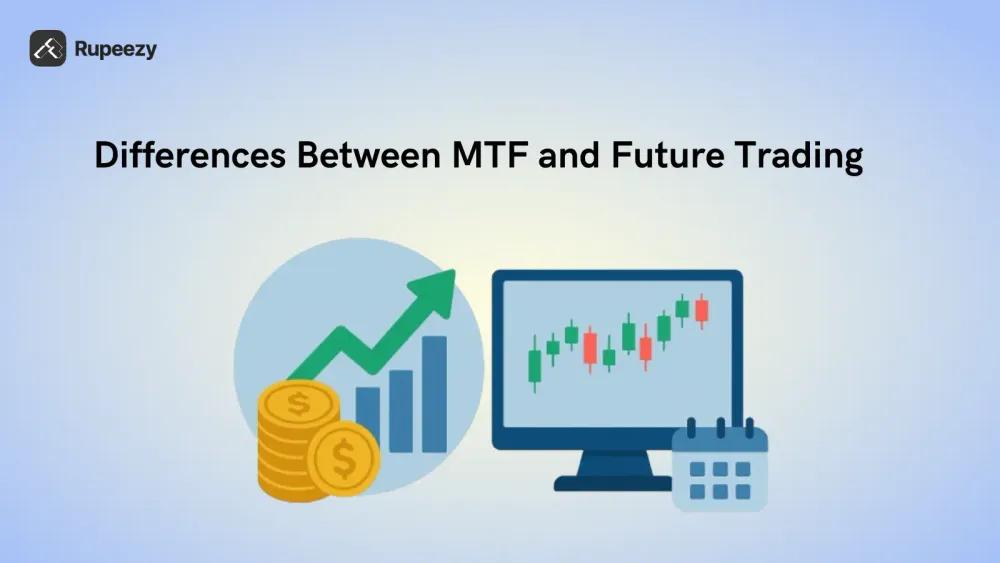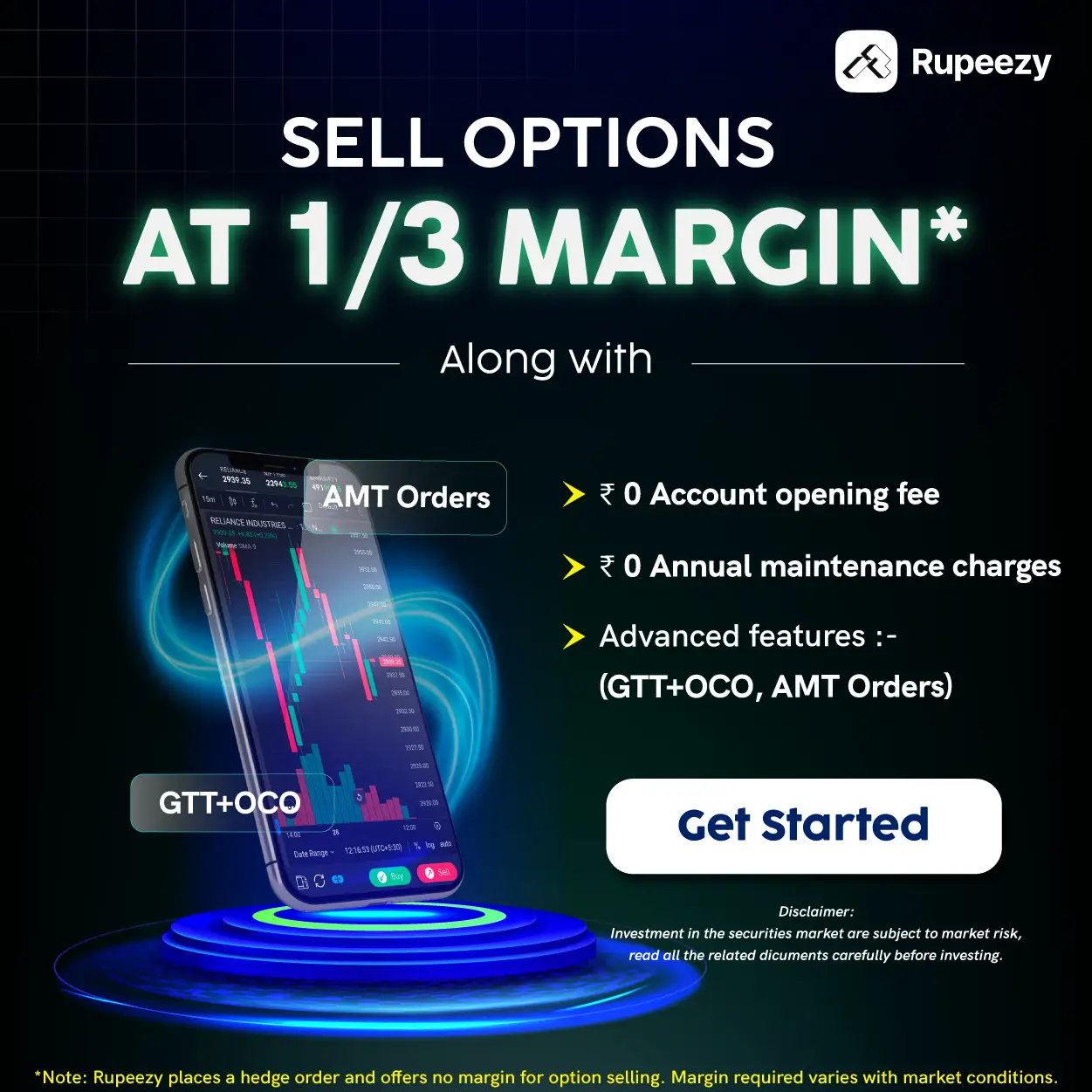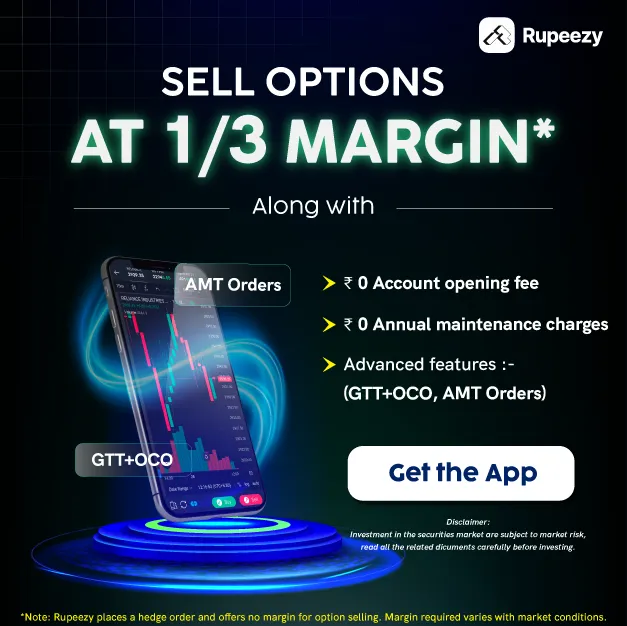Exploring the Differences Between MTF and Future Trading


00:00 / 00:00
When trading in the stock market, investors often wonder about the differences between Margin Trading Facility (MTF) and Futures Trading, and which method is better for them. Both options allow you to trade with less capital, but their purpose, risks, and methods are completely different. In MTF, you can buy and hold shares with the help of a broker, while in Futures Trading, you enter into a future deal at a fixed price without actually owning the shares. In this blog, we will explain in simple terms the "Differences Between MTF and Futures Trading," how both work, and in which situations each option proves to be more prudent.
What is a Margin Trading Facility (MTF)?
Margin Trading Facility (MTF) is a platform where you can buy more shares with less capital by leveraging funds provided by your broker. This means you contribute a portion of the capital (the margin), and the broker finances the rest. For example, if you have Rs.25,000 and want to buy Rs.1 lakh worth of stock, the broker can fund the remaining Rs.75,000 through MTF. While you become the owner of the shares, you are using the broker's money and will have to pay interest on it.
How does MTF work?
The MTF process is very transparent and regulated.
Identification of Eligible Stocks :
Not every stock is available for MTF. Only those shares that are included in the “eligible list” of the broker and the exchange (NSE/BSE) can be selected. This list is primarily determined based on liquidity, volatility, and SEBI regulations.
Margin Requirement (Initial Capital) :
In MTF, the investor has to initially invest a certain percentage of the amount themselves, which is called the margin amount. This is usually between 20% and 25%. For example, if you want to buy shares worth Rs.1,00,000 and the margin is 20%, you will have to invest Rs.20,000 and the remaining Rs.80,000 will be funded by the broker.
Funding & Interest Charges :
Interest is charged on the amount provided by the broker. This is where Rupeezy becomes the most attractive option for investors. Rupeezy provides funding to its users at an interest rate of 10.99% per annum or just 0.03% per day, which is one of the lowest and most transparent rates in the industry.
This allows investors to save a significant portion of their returns, which is a major advantage compared to other brokers.
Leverage Limit :
Rupeezy provides its users with a margin (leverage) of up to 5x. This means that if you have Rs.1, you can buy shares worth up to Rs.5. This feature is very useful for those who want to take advantage of more opportunities in the market with less capital.
Pledge System :
Under the new SEBI regulations, all MTF shares are now secured through a pledge system. This means that the shares you buy or already own are pledged under the NSDL/CDSL pledge process. This ensures that your holdings are completely secure and funding is done only in a regulated manner.
SEBI Regulation and Safety :
The entire MTF process is regulated by SEBI (Securities and Exchange Board of India). SEBI has implemented strict rules to ensure that brokers safeguard investors' funds and shares.
Why is Rupeezy a better MTF option?
Low interest rate: Just 10.99% p.a. or 0.03% per day the lowest in the industry.
Up to 5x leverage: Enabling greater trading potential with less capital.
SEBI-regulated pledge system: A completely secure and transparent process.
User-friendly interface: Easy tracking and real-time margin visibility.
What is Futures Trading?
Futures trading is a derivative contract through which an investor or trader agrees to buy or sell an asset (such as a stock, index, commodity, or currency) at a predetermined price on a future date. You could also call it a "deal at a future price."
Futures are mostly used for two purposes -
Speculation: When a trader believes the price of a stock or index will rise or fall.
Hedging: When an investor takes positions to protect their portfolio from future price fluctuations.
For example, if you think the Nifty is currently at 25,500 and will soon reach 26,000, you can take a long position in Nifty Futures. By paying only 10%-15% margin, you can gain exposure to a much larger value, thus taking advantage of leverage.
How does futures trading work?
Contract Structure :
Futures are standardized contracts with a predetermined lot size, expiry date (monthly/weekly), and underlying asset.
Margin Requirement :
To trade in futures, you need to deposit a margin of approximately 10% to 15% of the total contract value. This margin is exchange-regulated, meaning it is determined by the exchange, not the broker.
Leverage System :
Futures offer high leverage. This means you can take a large position with a small amount of capital. However, remember the higher the leverage, the higher the risk.
Mark-to-Market Settlement :
At the end of each trading day, the value of the futures contract is determined through mark-to-market (MTM) settlement. This means that the daily profits or losses are settled. This ensures transparency and protects against sudden large losses.
Expiry & Rollover :
Futures contracts have a fixed expiry date (such as monthly or weekly). If you want to extend your position, you have to roll it over, which means closing the old contract and opening a new one.
Differences Between MTF and Future Trading
Aspect | Margin Trading Facility (MTF) | Futures Trading |
Nature | This is a delivery-based equity trading system, where you buy and hold actual shares. | This is a derivative-based contract, where you trade on the future price you don't actually own the underlying shares. |
Ownership | You become the owner of the shares and can keep them in your Demat account. | You don't become the owner of an asset, you only take a position on its price. |
Leverage Type | The broker provides you with the fund meaning it's a broker-funded loan. | Leverage is determined by the exchange, meaning it is based on exchange regulated margin. |
Holding Period | As long as you pay the interest and maintain the margin, you can hold the shares for an unlimited amount of time. | It has a fixed expiry date usually weekly or monthly. |
Interest Cost | Yes, interest is charged on funding provided by the broker. At Rupeezy, this is only 10.99% per annum or 0.03% per day. | No, you don't have to pay interest on Futures contracts, but there is a daily Mark-to-Market (MTM) settlement. |
Risk Level | Medium risk is limited to the share price and the funds you have invested. | High leverage is very high, so even a small change can lead to a large profit or loss. |
Purpose | This is better for long-term investors who want to hold the shares. | Suitable for short-term traders or those looking to hedge their positions. |
Regulatory Control | Regulated by SEBI and secured under the pledge system. | Fully regulated by the exchanges (NSE/BSE) and SEBI. |
Cost Structure | This includes interest and brokerage charges. | The total cost includes brokerage fees + exchange charges + MTM settlement costs. |
Best For | For investors who believe in stocks and want to build a portfolio with leverage. | For traders who want to profit from rapid price movements. |
Practical Example: Comparing Real Scenarios
Example 1 – Long-Term Investor (MTF)
Let's say an investor wants to buy shares worth Rs.5 lakh through Rupeezy's MTF platform, but only has Rs.1.25 lakh in capital. Rupeezy provides him with a margin of up to 5x, meaning the investor can buy shares worth the full Rs.5 lakh by investing only Rs.1.25 lakh. If the stock price increases by 10% in the next 3 months, its total value will become Rs.5.5 lakh. This means the investor made a profit of Rs.50,000. Now, deducting the interest cost, at Rupeezy's low interest rate (10.99% per annum or approximately 0.03% per day), the interest for three months would be around Rs.4,000-Rs.4,500. Even then, the investor will get a net profit of approximately Rs.45,000, which translates to a return of approximately 36% on his initial capital of Rs.1.25 lakh.
Example 2 – Short-Term Trader (Futures Trading)
Now, let's say a trader trades in Nifty Futures. He believes that the Nifty will rise from 22,000 to 22,440 an increase of approximately 2%. With a 10% margin in Futures, he can take a position worth Rs.10 lakh by investing only Rs.1 lakh. If the Nifty actually goes up by 2%, the trader will make a profit of Rs.20,000, which is a 20% return on his capital in just a few days. However, if the Nifty falls by 2%, the loss will also be Rs.20,000.
Pros and Cons of MTF (Margin Trading Facility)
Pros | Cons |
Investing in real shares means you become the owner of those shares. | A drop in the share price can affect your capital and result in losses. |
You get leverage of up to 5x, meaning more trading power with less capital. | Higher leverage also increases risk, especially in volatile markets. |
As long as you pay the interest and maintain the margin, you can hold the shares for an unlimited amount of time. | If the share price does not rise for a long time, the interest costs reduce the profit. |
Secure funding is available for shares included in the 'eligible list' determined by SEBI and the exchange. | Only a limited number of stocks can be traded on MTF. |
Even if the market falls, you retain ownership of the shares that are pledged as collateral. | When a margin call occurs, the broker can forcibly sell the position. |
Pros and Cons of Futures Trading
Pros | Cons |
In futures trading, large positions can be taken with a small amount of capital, making rapid profits possible. | Due to high leverage, even a small loss can turn into a large deficit. |
No interest is charged, only exchange fees and brokerage. | MTM (Mark-to-Market) settlement impacts capital on a daily basis. |
Ideal for short-term trading and quick returns. | Every futures contract has a fixed expiry date, after which it must be rolled over or closed. |
Portfolio hedging is an effective tool that provides investors with protection against volatility. | If the hedge goes in the wrong direction, the losses can be doubled. |
Transparent and regulated by SEBI under NSE/BSE. | The complexity of the rules can be difficult for new investors to understand. |
Conclusion
Both MTF and Futures Trading are instruments that allow investors to utilize leverage, but they differ in their objectives and risk levels. MTF is suitable for investors who want to invest in actual shares for the long term and prefer to generate returns gradually. On the other hand, Futures Trading is ideal for traders who want to profit from short-term market movements and are willing to take on higher risks. It is wise to choose the option that best suits your strategy and risk profile.
FAQs
Q1. What is the main difference between MTF and Futures Trading?
In MTF, you buy actual shares, while in Futures, you only bet on the price.
Q2. Is MTF safer than Futures Trading?
Yes, MTF is safer because it involves ownership and lower risk.
Q3. Do I need to pay interest in MTF?
Yes, interest is charged on the broker funding.
Q4. Can I hold MTF shares for a long time?
Yes, you can hold them as long as you pay the interest and maintain the margin.
Q5. Which is better for beginners?
MTF is better for beginner investors because it is less risky.
The content on this blog is for educational purposes only and should not be considered investment advice. While we strive for accuracy, some information may contain errors or delays in updates.
Mentions of stocks or investment products are solely for informational purposes and do not constitute recommendations. Investors should conduct their own research before making any decisions.
Investing in financial markets are subject to market risks, and past performance does not guarantee future results. It is advisable to consult a qualified financial professional, review official documents, and verify information independently before making investment decisions.

All Category









